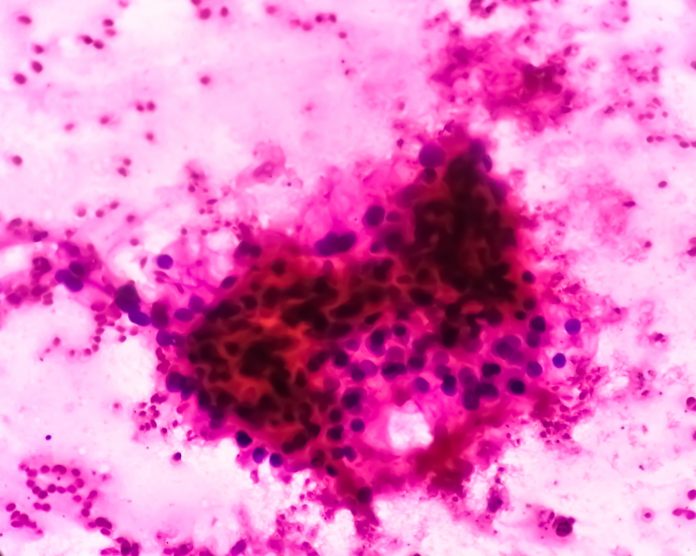
Clear cell renal cell carcinoma (CCRCC) is the most common type of kidney cancer. While outcomes of patients have been improving due to new treatment options, the five-year survival rate of patients is 50% to 69% and even less for patients with metastatic disease.
To learn more about the development of CCRCC, a team of researchers at the Moffitt Cancer Center, developed a survival risk tool to indicate which patients are at high risk of poor outcomes based on their biomarker expression. Their work is published in a new study published in European Urology.
Clear cell renal cell carcinoma is a complex disease that develops due to different types of genetic mutations, including alterations that are inherited and those that develop sporadically. Despite this knowledge, none of these mutations have been able to be used to develop effective therapeutics. To help better understand the key molecular processes that contribute to clear cell renal cell carcinoma development, Moffitt researchers began studying alternative messenger RNA (mRNA) splicing variants to determine if they are altered in this disease and if the variants could be used as biomarkers for patient outcomes.
mRNA is a key intermediate molecule in the process of converting DNA into proteins. DNA is converted into mRNA in the nucleus of cells. The mRNA is then used as a template to form proteins that control all cellular and physiological processes; however, before the conversion of mRNA to protein, the RNA molecule is spliced into different products.
“These splice variants that are expressed contribute to proteomic diversity by having a single gene code for several protein types,” explained first author Andrew Chang, of the department of Genitourinary Oncology, H. Lee Moffitt Cancer Center & Research Institute. Alternative splicing is a natural process, but cancer cells can hijack the process to create splicing variants that contribute to cancer development and progression.
“We know that some splice variants contribute to pathogenesis or worse outcomes, but they haven’t been well-defined in a variety of different cancer types,” said Chang. To accomplish that goal, the Moffitt researchers used a novel screening process to identify the splice variants that are uniquely expressed in cancer, starting with CCRCC.
The team examined splice variant data from several CCRCC cell lines included in two publicly available databases and the Moffitt’s institutional database of RCC patients. Next, they compared the splice variants in those cell lines with those in other cancer types and whittled down the number of splice variants uniquely linked with CCRCC. The researchers then eliminated the variants that were present in normal tissues. They identified 16 key splicing variants that were altered in patients with CCRCC.
“When we looked at the post-surgical outcomes of patients with CCRCC, we found that a small subset of splice variants was associated with particular outcomes,” said Chang. Expression of RNASET2 and FGD1 splice variants was associated with poor outcomes, while expression of PDZD2, COBLL1 and PTPN14 was associated with better outcomes.
The researchers used this information to create a survival risk tool based on the combined expression levels of these five splice variants. The tool was able to stratify patients according to low, intermediate, and high risk of overall and cancer-specific survival. The researchers further analyzed protein expression patterns in CCRCC tumor samples and discovered that several proteins responsible for gene splicing had altered expression and protein modification patterns in the high-risk patient group.
“In renal cell carcinoma, we don’t have good biomarkers for recurrence,” said Chang. “So if we can find splice variants that are uniquely expressed by cancer cells, they can potentially be biomarkers as well.” The team is now working on a follow-up study to see if they can detect some of these splice variants in the blood of patients.
“This is a unique tool we have applied to learn more about potential pathogenic mechanisms in renal cell carcinoma,” added Chang. “But I think it could be applied to other cancers where you look for splice variants that may contribute to worse outcomes, pathogenesis, or serve as biomarkers in those cancers.”











